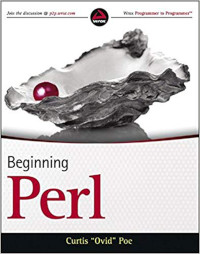Introduction
I’ve been meaning to write this article for a while, but never quite got around to it. Now I’m around it and I know that it will annoy a few people. In fact, any time I read new discussions about how Dr. Alan Kay, the inventor of the term “object-oriented programming”, intended something entirely different from what we have today, the online discussions often devolve to people acting like he’s some grumpy old dude who just graduated from a PHP bootcamp.
If you want some extended discussions I’ve written about Alan Kay and OO Programming and Alan Kay and Missing Messages. They’re not required for following along in this article.
In 1967, Simula 67 was released. This is often referred to as the first “true” object-oriented language because it included these four feature:
- Classes
- Polymorphism
- Encapsulation
- Inheritance
It offered many other features, such as subtyping, coroutines, and discrete-event simulation , but those are just curiosities for the purpose of this article.
Inheritance
Of the above list, the first three are generally non-controversial, but inheritance has been a pain in the ass for over five decades now. The following illustrates the core problem with inheritance:
class Person :isa(Invoice) {
...
}
What the hell does that even mean? I suspect (though I can’t prove), that the majority of issues we have with inheritance today stem from that core problem. A subclass is intended to be a more specific instance of a parent class, but that’s a semantic issue the programming language can’t determine. Instead, there’s a kilo of fat shoved in our skull which has to figure out what that means and we often get it wrong.
This is problematic enough that Alan Kay left inheritance out of his original descriptions of Object-Oriented Programming (OOP). It’s problematic enough that some OOP langauges (or OOP-like, depending on your definition) don’t allow inheritance at all. Some allow multiple inheritance. Others only allow single-inheritance but usually give you some tools to make life a touch easier than simply composition and delegation (interfaces, mixins, aspect-oriented programming, roles (Smalltalk-style traits), etc.).
Importantly, in class-based OOP languages, the classes define the behavior and the instances of those classes contain the data (hand-waving on this quite a bit, of course).
Classes versus Prototypes
But what about the other features? They seem good, right? Well, there are a number of protype based programming langauges , such as Javascript, Lua, Self, Io, and so on. In these languages, an object can contain both data and behavior and you copy the object and add new data and behavior as needed. To be honest, though, when I squint, I see single inheritance in protype-based languages. I’ve never worked with one enough to be confident in saying that, though.
Dr. Alan Kay
But here’s someone who should be considered an expert on the term. Note that he didn’t invent OOP, merely the term. And he’s not happy with where it went.
This isn’t a classical “argument from authority” fallacy because I’m not going to argue whether or not he’s correct. Instead, I’m going to argue that microservices adhere much more closely to his idea of OOP than traditional class-based systems.
In particular, he identifies the following three key features as the core of his idea of OOP :
- Messaging
- Isolation
- Extreme late-binding
All three of those are unusual enough to the minds of many programmers that they’re worth digging into. I’ll be brief.
Messaging
In Kay’s view, you don’t call methods on an object, you send messages to it.
The receiver is free to respond however it likes, including ignoring the
message. For example, with a web server, you could send the message DELETE
/foo.html and it’s free to return a 400, a 404, another status code, or
simply drop the request. If you think of the server as an object, you’ve
sent it a message and it can do any damned thing it wants with it.
Isolation
Alan Kay actually said, “local retention and protection and hiding of state-process,” but we often use the term “isolation” instead.
First, let’s think about encapsulation. If, internally, an object has a secret key for encrypting/decrypting something, you don’t want that exposed. That’s encapsulation. Many languages get this right, though I’ve found that many dynamic languages make this hard to enforce. Fixing this is one of the key drivers of the Corinna OOP project for Perl .
But what happens if we do this (Corinna OOP syntax)?
class User {
has $username :param :reader;
has $password :param;
}
my $user = User->new(
username => "Ovid",
password => 'hunter2',
);
say $user->username; # "Ovid"
say $user->password; # "Method not found" error
So I can instantiate a User object, send it to you, and you can see their
username, but not their password. That’s encapsulation. But if you try to
call $user->password, you also get an exception. That’s encapsulation, but
not isolation. Alan Kay referred to “state-process”, not just state.
Again, think about a web server and a web client. If the server throws a 500 error, or just catastrophically crashes, your client doesn’t suddenly crash (unless it’s poorly written). Instead, it gives you useful information which you can then use to decide what action to take. In fact, Kay has described the Web as being the most successful example of OOP ever invented.
Extreme Late Binding
In many OO languages, we have early binding where the class is used to resolve, at compile time, the method that is to be called. You will get compile time errors if the method does not exist.
In late binding, we use the instance to determine resolve, at runtime, the method that is to be called. If you don’t know what kind of instance you have, you can get runtime errors if the method does not exist.
So what’s extreme late binding? The method might not even exist when it’s
called, but it still resolves, or its behavior might change between calls
because you’ve found a more efficient or accurate implementation! Smalltalk
and Erlang are two languages known to easily support this. Surprisingly, Perl
can as well, using the AUTOLOAD feature. Here’s a silly example using the
Corinna syntax, with a few speculative (made-up) features to make the example
clearer:
class SomeClass {
has @objects;
ADJUST {
# populate @objects
}
method AUTOLOAD ($method, @args) {
foreach my $object (@objects) {
if ( $object->can($method, @args) ) {
$MOP->class->add_method(
$method,
method { $object->$method(@args) }
);
return $self->$method(@args);
}
}
return;
}
}
my $instance = SomeClass->new;
# return $object->frobnicate(42) from the first composed object
# which can handle the request
$instance->frobnicate(42);
In the above example, SomeClass doesn’t implement any methods at all, but if
you call one that doesn’t exist, it installs one that delegates to an object
having that method. Later calls would call the installed method instead of
AUTOLOAD.
We can again use the web server/client analogy to explain this. A browser makes a request and the web server may not even be designed to handle the request but serves a result anyway. It might even later cache that request so it doesn’t have to recompute it. You don’t know. You don’t care. You only know you made a request and got a response. Hopefully it’s a useful response.
The intent behind extreme late-binding is to protect you from committing too early to an implementation that may not be what you need (or even needed), but allow you to respond to the method/message if appropriate.
Microservices
There’s a lot of confusion about microservices and SOA (Service-Oriented Architecture) and I cover some of it in this article .
Microservices are generally expected to have all the logic and data they need to perform a task. They’re not coordinating with a bunch of other services and thus are loosely coupled and fit well with agile development.
SOA services, however, need to coordinate with other services in the same way that your
Orderobject needs aCollectionofItemobjects, along with aCustomerobject, and so on.
A microservice is self-contained and might duplicate code in a way that SOA does not, but it’s completely isolated from the rest of the code. It’s basically a process/server running that has an API (messages), isolates everything, and can use extreme late-binding if it wishes to.
Thus, if you aspire to Dr. Kay’s model (and the success of the internet is a powerful testimonial), you may want to look at microservices. Some people look at microservices as being a silly fad, but they’re a fad that’s been around for quite some time and more and more companies are using them. In fact, our company, All Around the World is routinely getting more requests from clients about implementing SOA/microservices for their systems.
One interesting point about microservices (which SOA might struggle with) is that the extreme isolation of them combined with an OpenAPI interface means that you can separate off a layer of your system as a microservice, make sure it works, and then easily rewrite it in another programming language that might be more appropriate to the task at hand. That’s often extremely hard to do when you directly use/import/require/include a module because it’s usually required to be in the same language.
A Little Secret
But if you agree with the idea that microservices might be the next step in OOP, along the lines of what Alan Kay proposed, perhaps we should keep this our little secret, shall we? OOP “purists” might be horrified at the description and OOP “haters” might be aghast at realizing they’ve been writing objects all this time. Admitting that microservices are objects might be a marketing disaster, even if it’s true.


